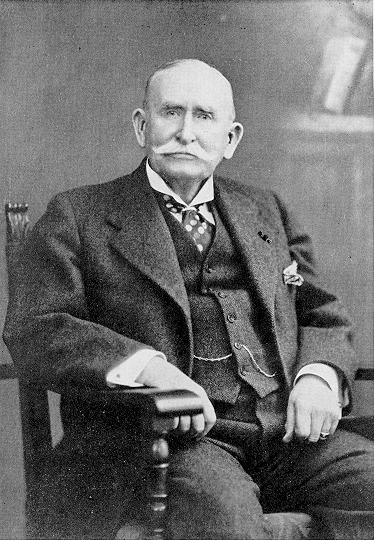1638 – HAMPTON TERCENTENARY – 1938
by Mrs. Vina M. Jones
No history of Hampton or  celebration of its founding would be complete unless the name of Tuckwere given a worthy place in the annals of that little band who braved the hardships and privation for conscience’s sake.
celebration of its founding would be complete unless the name of Tuckwere given a worthy place in the annals of that little band who braved the hardships and privation for conscience’s sake.
In 1638, Robert Tuck with Rev. Steven Bachiler and his followers came to Winnacunnet “Beautiful Land of Pines” to found a church and build homes.
No thought of gold or riches lured them to a new land, but the right to worship God in their own way. No pride of ancestry but character was their passport.
For several generations, the name of Tuck was prominent in church and town affairs.
In 1807, John Tuck, of the sixth generation, removed to Parsonsfield, Maine. There, in the little brick house on the shore of Province Pond, preserved with loving care by his descendants, was born in 1810 Hon. Amos Tuck, who as a lawyer was to become in Exeter a distinguished member of the New Hampshire Bar. He was one of the earliest Free Soilers, elected to Congress as such in 1847, and first suggested, in October 1853, the name of Republican for the new Party, then forming, as recorded by the tablet now affixed to the Squamscott House in Exeter. He was personal friend of Abraham Lincoln, John Greenleaf Whittier and many other men prominent in his time.
In his youth Amos Tuck came to Hampton and was for a time Headmaster of the (Hampton) Academy founded by his ancestors. His stalwart character and deep interest in the students have been handed down as valued traditions of the old school. A part of his salary, which could not have been large, was given to purchase equipment with which the pupils might pursue their studies.
Here also, he married the daughter of a leading citizen of the town, David Nudd. She became on August 25, 1842 the mother of EDWARD TUCK, now living in Paris, France.
Edward Tuck, born in Exeter, where his father settled after completing his studies in law, was one of the youngest of eight children, the only surviving boy. He did not follow in the footsteps of his father as a lawyer and statesman, but chose the realm of finance in which he was eminently successful and became a banker of international reputation.
Mr. Edward Tuck has contributed generously to many enterprises in Hampton. He perpetuated his father’s interest in its young people by furnishing the funds to develope the Tuck Athletic Field, one of the best to be found for miles around. It was largely through his assistance that the Memorial Park was created and for some years, until it was taken over the town, he paid for its care and upkeep, thus commemorating the memory of his early ancestors among the other settlers of the town.
His exceptional talent as a financier as well as his contributions to the world of art and education place him among the great of the earth. His well-directed and discriminating kindness to individuals has enshrined him in the hearts of hundreds of men and women in all walks of life in many lands. Today, at the age of ninety-five, though by necessity limited, he still pursues his activities in the interests of humanity.
It may be said that he personifies in a very practical way the beautiful though expressed in the little verse by Ella Wheeler Wilcox:
So many paths that wind and wind,
While just the art of being kind
Is all the sad world needs.
(Footnote: Edward Tuck died in Monte Carlo on April 30, 1938. He was buried at Saint-Germain-en-Laye, near Paris, France, with impressive services attended by members of the French Government and many other notables. He was a great benefactor to the Town of Hampton as well as to the State of New Hampshire. His many gifts include the Tuck Historical Building, a beautiful granite structure in Concord, New Hampshire, the Amos Tuck School of Business Administratioin at Dartmouth College, also a residence for the President of the College. He had resided in France for many years and to that country he presented his beautiful art collection of tapestries and porcelains, which are appropriately housed in the Petit Palais in the City of Paris. In the City of Rueil, he and Mrs. Tuck built, supervised, and supported a magnificent hospital for many years. Mr. Tuck’s last tribute to his adopted country was the restoration of The Trophy of the Alpes, La Turbie, near Monte Carlo, dedicated in 1934. It is a massive monument originally built by the Romans in the year 6 B.C. to commemorate the unification of the Augustan Empire.